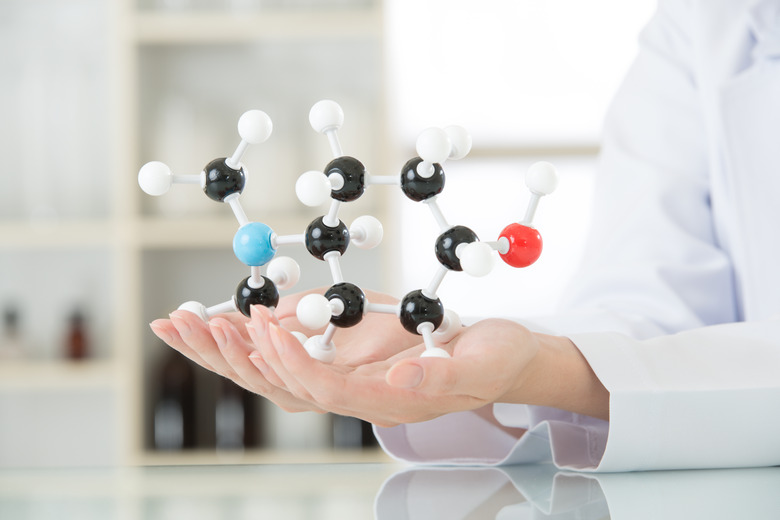What Are The Major Chemical Elements Found In Cells In Biology?
The cells of living things are made mainly of four elements: carbon, hydrogen, oxygen and nitrogen. They make up 96% of the atoms that are in living things, so they would be considered major chemicals. However, depending on how you define major, other elements that only make up a few percent of cells can top the list. If major also means essential for life, then "trace elements" are very major though they make up just 0.5% of the atoms in an organism.
TL;DR (Too Long; Didn't Read)
The four most important elements in cells are carbon, hydrogen, oxygen and nitrogen. However, other elements — like sodium, potassium, calcium and phosphorus — are also important.
The Big Four
The Big Four
Carbon, hydrogen, oxygen and nitrogen are known as the main "organic" elements because they form the building blocks that make life possible. Among the four, carbon is perhaps the most special, since it can form bonds with itself and makes molecules that have many different shapes. Carbon molecules can be short chains, long chains, bent chains, branching chains and ring shapes. The four classes of macromolecules that make life possible (protein, carbohydrates, lipids, and nucleic acids) are all made of carbon, along with the other three main organic elements.
Major Elements
Major Elements
Aside from the big four mentioned above, the next major elements would be phosphorus, sulfur, sodium, chlorine, potassium, calcium and magnesium. These make up 3.5% of living things. Phosphorus helps connect individual units of DNA into a long chain. Sulfur forms bridges between different parts of a protein, which help give the protein its 3D shape. Sodium, chlorine, potassium and calcium are essential for nerve cells to send electrical signals to other cells. And some enzymes require magnesium to work.
Trace Elements
Trace Elements
Trace elements are present at low levels in organisms and make up just 0.5% of living cells. However, living things would not be able to survive without trace elements. Trace elements include:
- iron
- iodine
- manganese
- molybdenum
- selenium
- silicon
- tin
- vanadium
- boron
- chromium
- cobalt
- copper
- fluorine
Iron is found in red blood cells and helps to carry oxygen in the blood stream. Iodine is important for making different forms of thyroid hormone, which regulates growth and energy levels in humans. Many of the trace elements are required by enzymes in order to make chemical reactions happen.
The Importance of Water
The Importance of Water
Water is made of two hydrogen atoms bond to an oxygen atom. Though water exists as separate molecules and does not form physical connections with proteins, lipids, carbohydrates and nucleic acids, it is essential for life. The molecules that make life possible only work if they are dissolved in water. Enzymes speed up chemical reactions, lipids serve as energy stores and sugars are easily broken down to make energy, but all of this is possible because these molecules are floating in a watery environment. The hydrogen and oxygen in water are two of the big four elements of life, but these two serve a distinct purpose as water, compared with the purposes they serve when they are part of the carbon-containing organic molecules.
Cite This Article
MLA
Ph.D., David H. Nguyen,. "What Are The Major Chemical Elements Found In Cells In Biology?" sciencing.com, https://www.sciencing.com/major-chemical-elements-found-cells-biology-21339/. 30 April 2018.
APA
Ph.D., David H. Nguyen,. (2018, April 30). What Are The Major Chemical Elements Found In Cells In Biology?. sciencing.com. Retrieved from https://www.sciencing.com/major-chemical-elements-found-cells-biology-21339/
Chicago
Ph.D., David H. Nguyen,. What Are The Major Chemical Elements Found In Cells In Biology? last modified August 30, 2022. https://www.sciencing.com/major-chemical-elements-found-cells-biology-21339/
